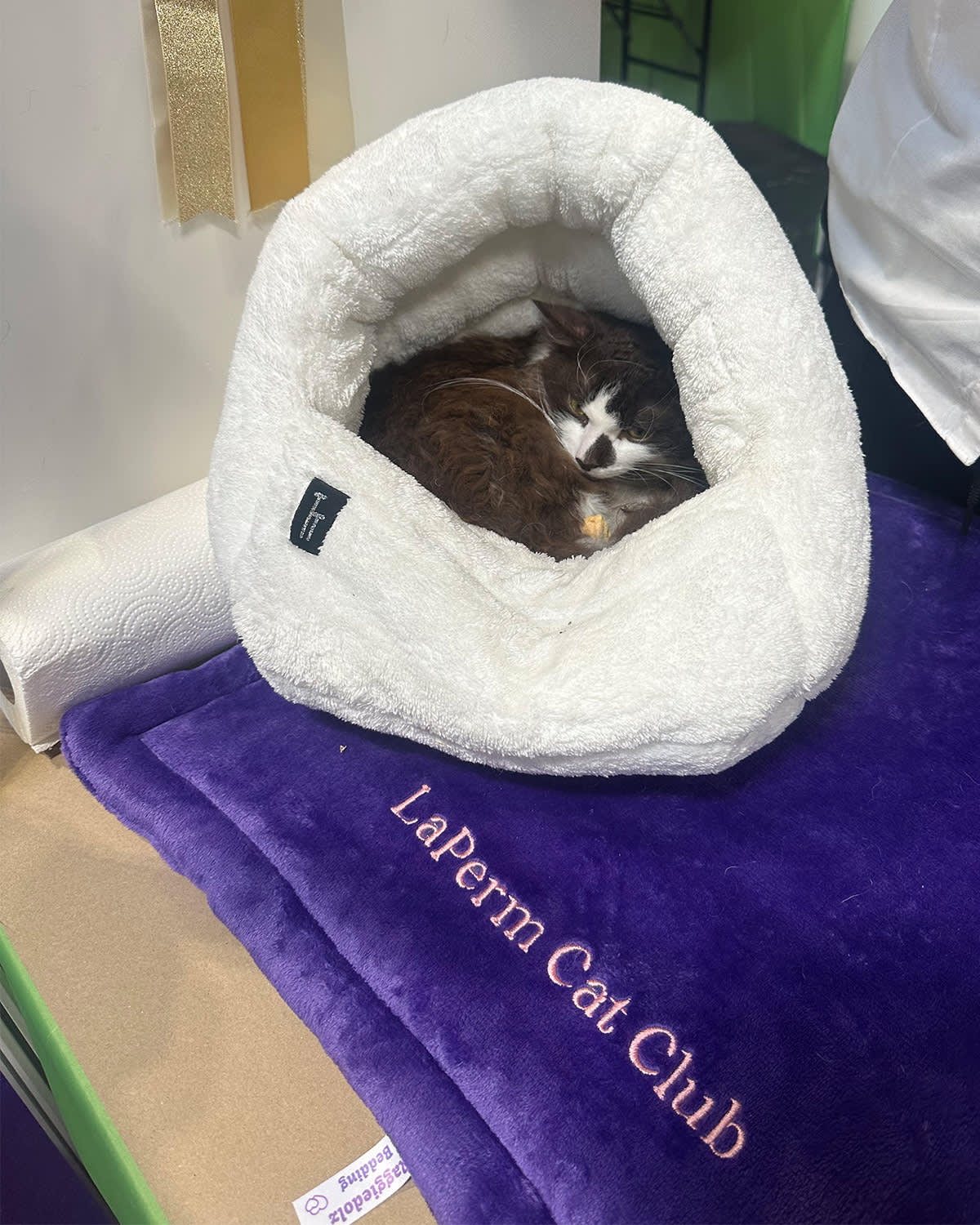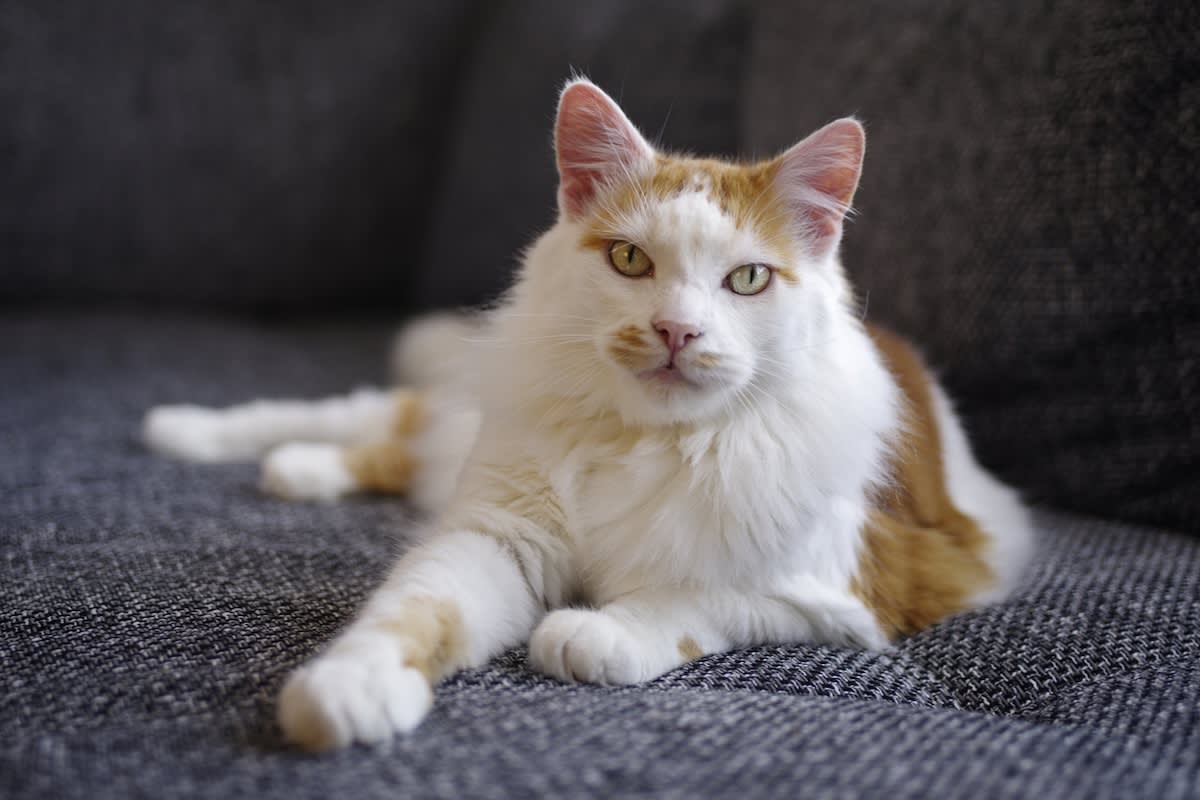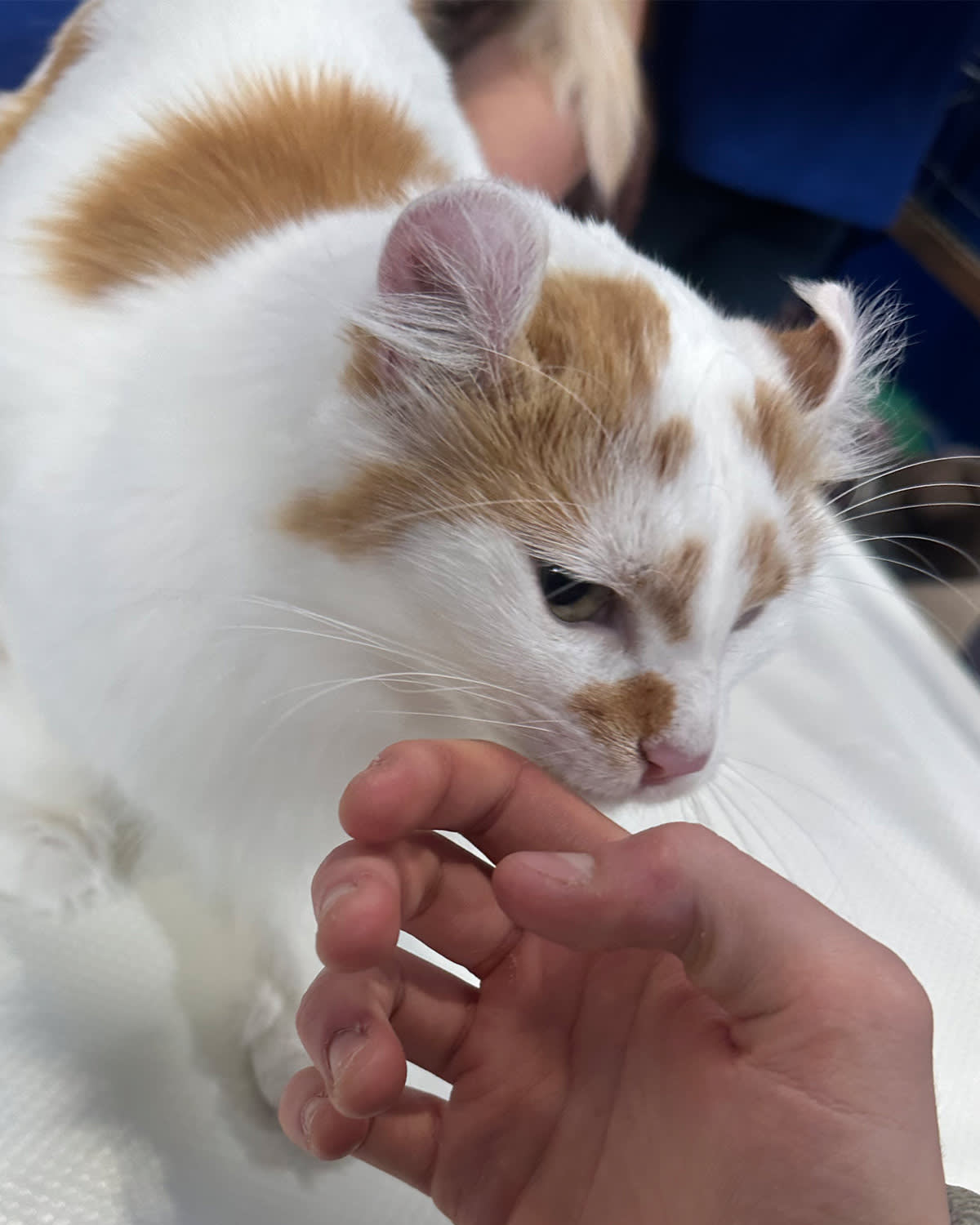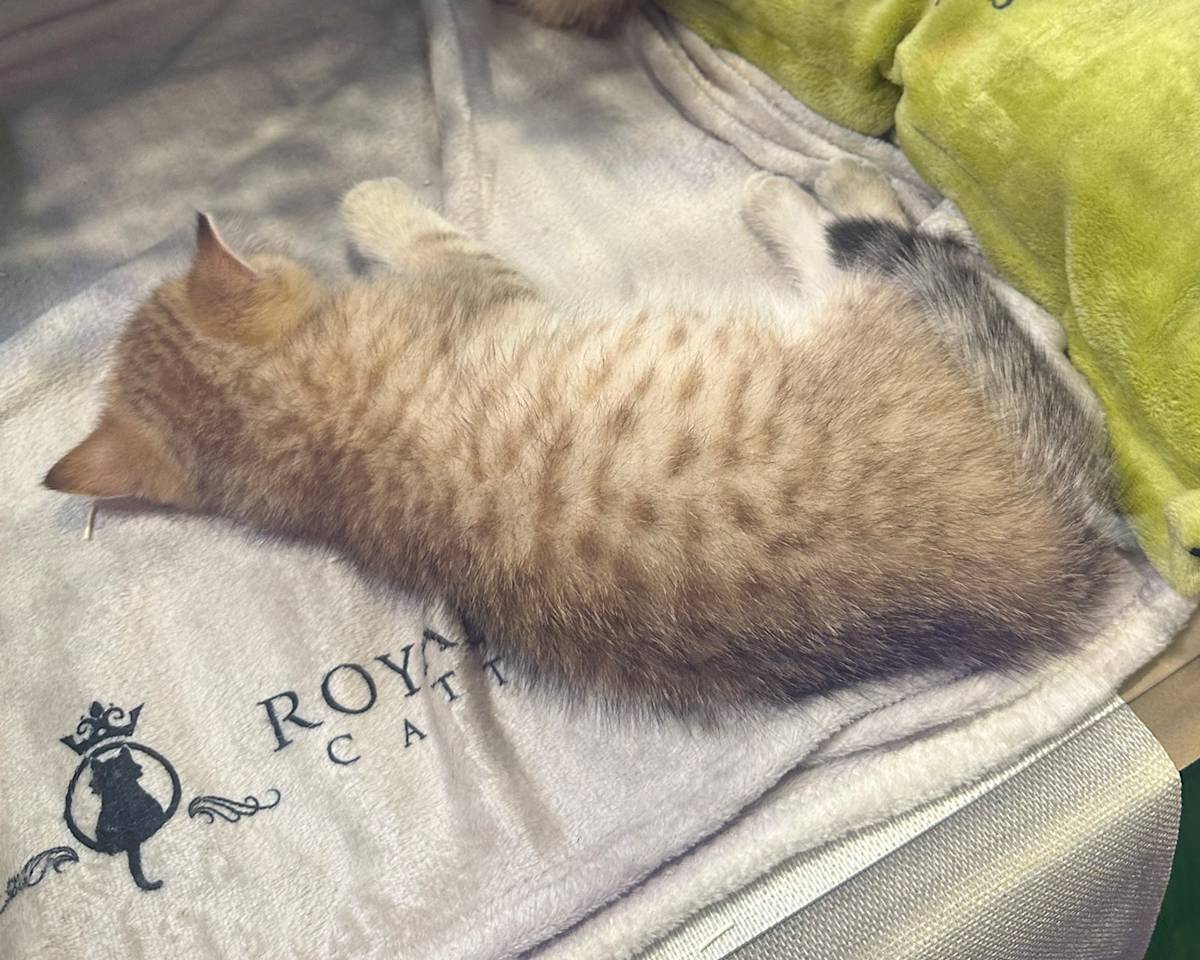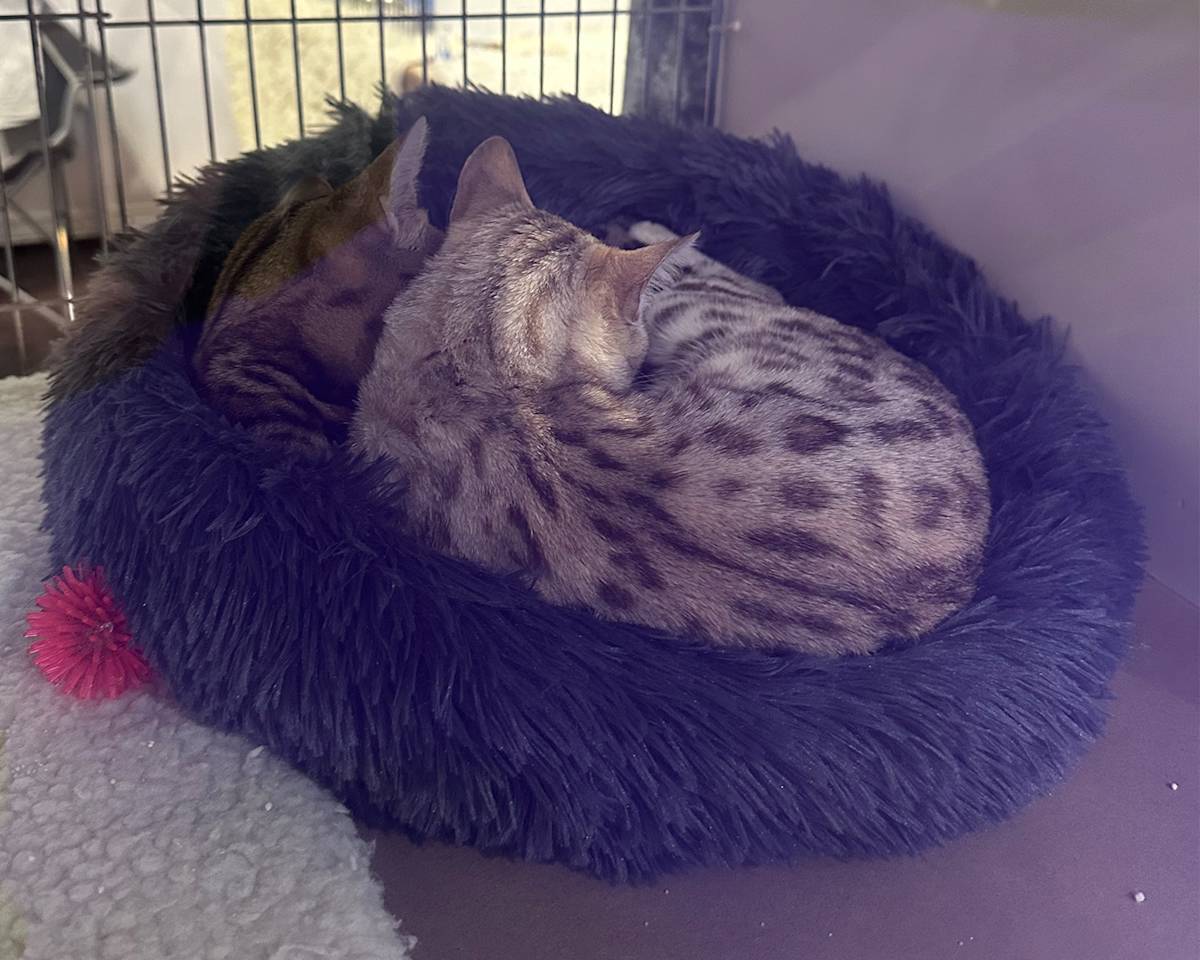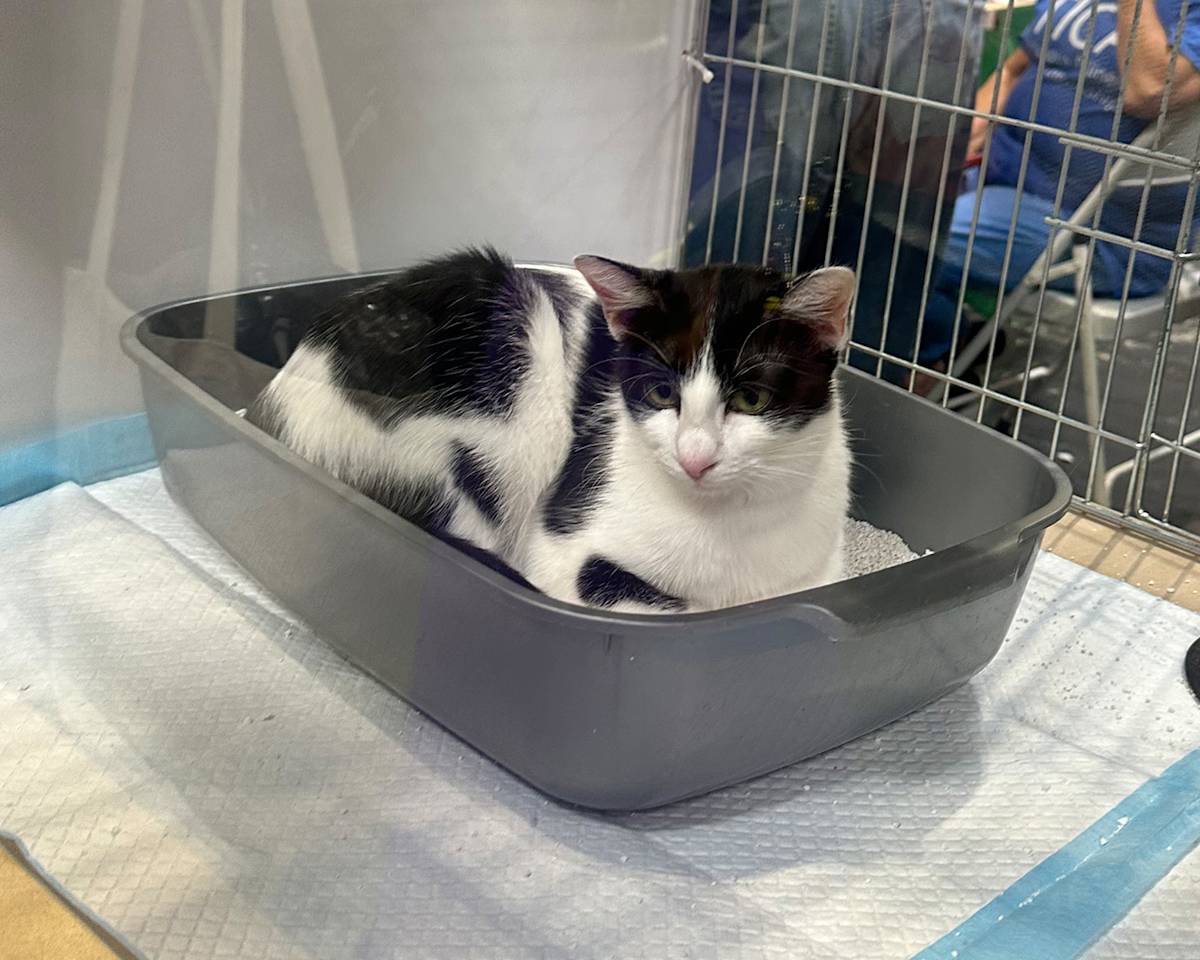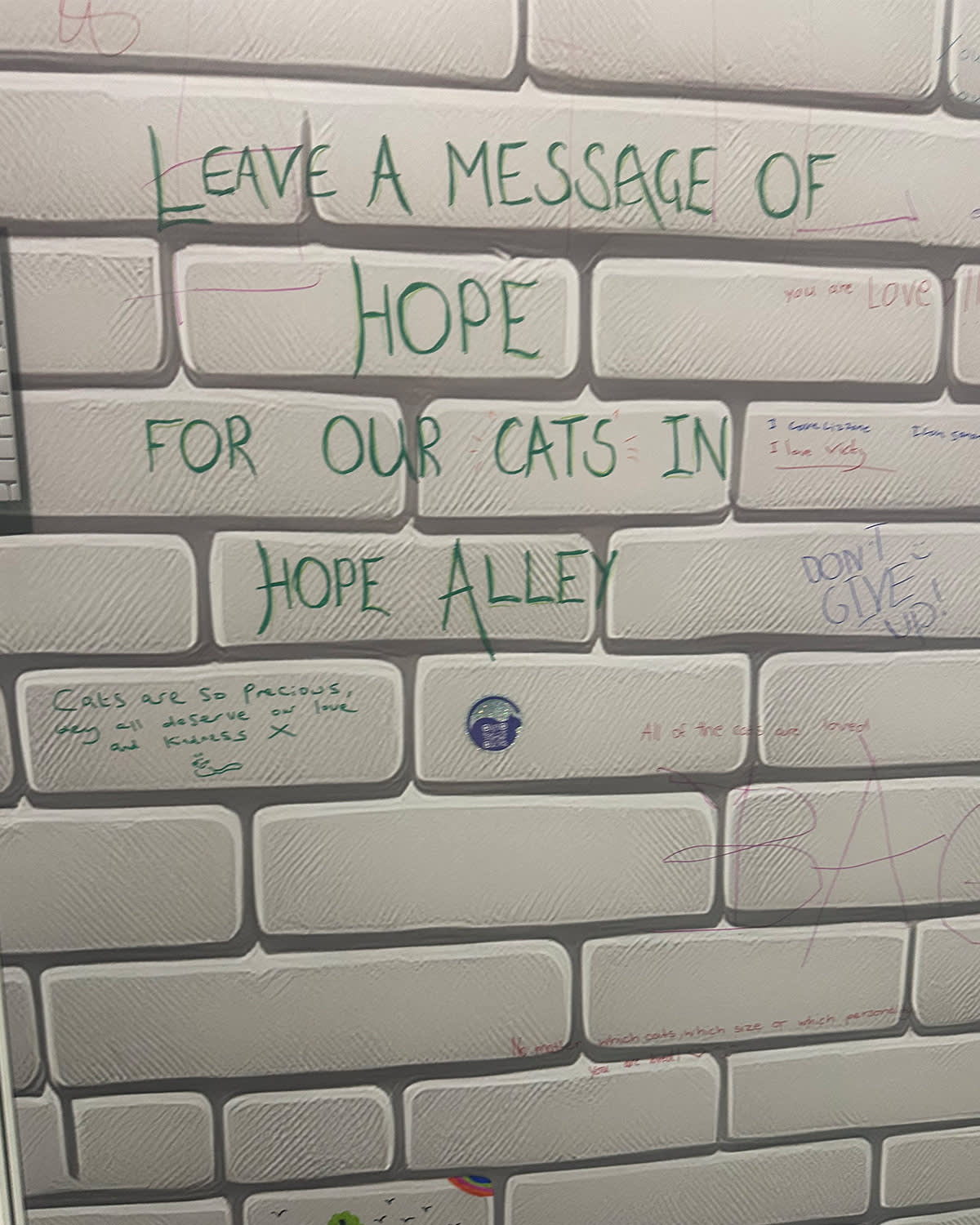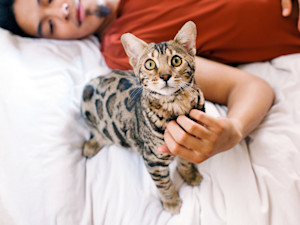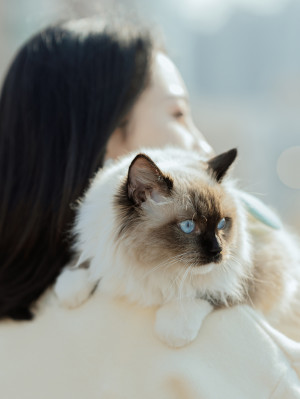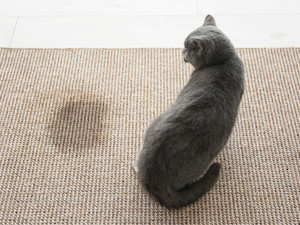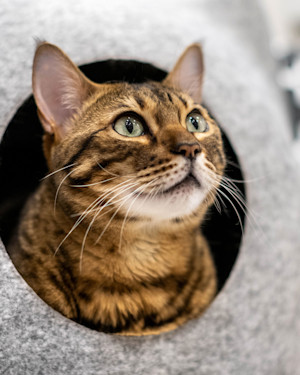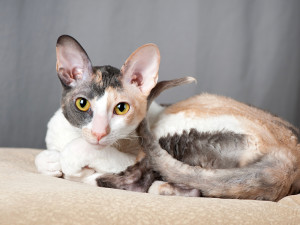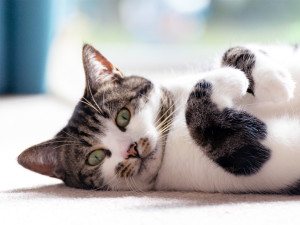The Cat Show Live Taught Me Everything I Didn’t Know About Felines
Who knew there was a breed named after an ’80s hairstyle?
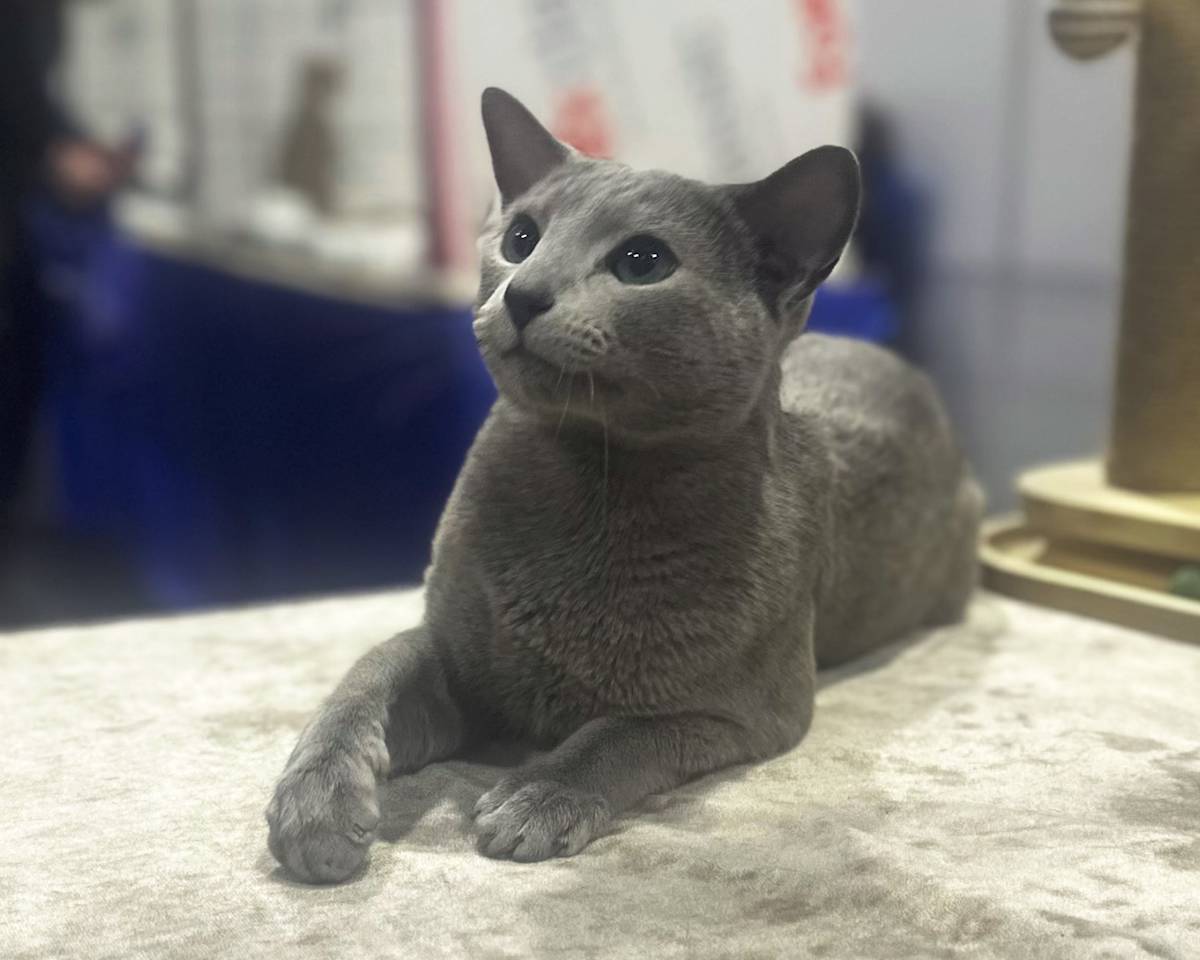
Share Article
A hall filled with cats and the people who love them – is this the closest thing to paradise on planet Earth?
The Cat Show Live, the UK’s biggest cat show, returned to Birmingham on 13 September, and obviously we had to go along. The event showcased the most adorable golden British Longhair kittens, huge Maine Coons, some of the best experts the feline world has to offer, and more treats and toys than a cat parent could shake a bag of Dreamies at.
I’ve grown up with cats, I’m a proud cat father of two, and I spend a lot of my time writing about our pets. But honestly? The Cat Show completely shattered what I thought I knew about felines. Here are 11 unexpected discoveries that left my mind blown.
The rare and unusual cat breeds you’ve probably never heard of
There’s a breed of cat named after an ’80s hairstyle
It’s true: the LaPerm cat is literally named after the perm hairstyle. These curly-coated beauties descended from a single barn cat in Oregon in the 1980s – one cat with a random genetic mutationopens in new tab started an entire breed.
How much do you spend on your pet per year?
These affectionate, playful cats might be named after the perm hairstyle popular in the ’80s, but they didn’t arrive in the UK until as recently as 2002. The LaPerm’s curly, textured coat comes from a dominant rex gene – though they’re unrelated to other rex cats – and make it look like they’re fresh out the hairdresser’s.
Turkish Vans are almost as massive as Maine Coons
Another breed that stole the show: Turkish Vans are enormous. They originated in the UK in the 1950s when two British photographers brought them back from Turkey, and they truly rival the Maine Coon for sheer size. Their distinctive colour pattern – coloured head and tail, with a white body – is so iconic it’s called the “Van pattern” and has been named after them.
And, speaking of names. They were first called Turkish cats before adopting the ‘Van’ moniker to differentiate them from the Turkish Angora. But that ‘Van’ name? Not the four-wheeler you’re thinking of. They are actually named after Lake Vanopens in new tab, the largest lake in Turkey, and are sometimes known as “swimming cats” because they actually swim and love water (yes – really!).
American Curls get their names from their curly ears
American Curls are instantly recognisable – it’s those curly ears! But they‘re not just for show. Those impossibly cute curled-back ears that make them look eternally surprised are the result of another random gene mutation that first appeared in stray cats in California in 1981. But what’s even more wild is that only about 50 percent of American Curl litters actually have curled ears. Even after 40 years, they’re still quite rare in the UK, with only a couple of breeders.
Unexpected expert cat care tips
The truth about cat dental care
Here’s a statistic that made me feel immediately guilty: according to a poll from 2015, 86 percent of cat parents agreed that brushing their cat’s teeth was an inconvenience for both pet and human alike. That’s why dental hygiene expert Victor Carpio of Inventor Catopens in new tab, one of the speakers at the event, created the Dental Wand. It’s a toothbrush that taps into the cat’s natural instinct to hunt and can be filled with an enzymatic cat toothpaste.
The best breeds for first-time cat parents
Speaking to clinical behaviourist Amanda Campion (aka Kittysittyopens in new tab) about first-time cat parenting, she had some pretty straightforward advice: “Don’t go for something like a hybrid cat, go for something robust and solid like a British Shorthair or British Blue.”
Both pedigree and non-pedigree cats can be a great fit if you’re thinking of getting a cat for the first time. “They’re both going to need vet visits, both will need injections, both will need daily care and attention,” says Amanda. Either way, it’s about finding a breed temperament that matches your lifestyle (there are plenty of rescue kitties searching for forever homes out there!), rather than chasing exotic breeds.
Why your cat might be avoiding the litter box
“The biggest bugbear of any cat parent is soiling outside the tray,” clinical cat behaviourist Amanda Campion (aka Kittysittyopens in new tab) told us, and honestly, she’s not wrong.
But her advice also got me thinking. “It’s important to realise that [weeing outside the litter box] may be behavioural, it may be medical, and these two areas can coexist,” she added. If the vet rules out medical issues and you find out it’s behavioural, Amanda advises changing the litter to a loose, soft substrate as a first step.
Feline facts that blew my mind
Cats really need their beauty sleep
One thing that made me smile throughout the day: even at this massive, stimulating event, cats were just... being cats. They slept between 12–16 hours as usual (in between being fussed over by everyone at the show), curled up in their pens under the watchful eyes of their breeders. Watching these perfectly groomed show cats having afternoon naps reminded me that no matter how fancy the venue, cats will always prioritise their sleep schedule above everything else.
Siamese kittens are born completely white
Those iconic dark points on Siamese cats? They develop during the first few months of life due to temperature-sensitive genes. The pointed pattern is actually a form of partial albinism – colder areas of the body develop darker fur.
Seeing the Oriental cats at the show (which are closely related to Siamese), I learnt they have the same head and body type but come in a much wider range of colours and patterns. The genetics behind cat colouring is far more complex than I imagined.
Non-pedigree cats can compete too
We might associate cat shows with pedigree felines, but household cats – domestic cats without a known pedigree – can take part in cat shows in the Household Pet category. “The most important consideration for the Household Pet is overall condition and well-being,” per The International Cat Association. “The Ideal Household Pet is scrupulously clean, well-fed and altered. He seems to smile with good health and contentment.”
Show highlights that restored my faith in humanity
A mission to find 100 rescue cats homes before Christmas
Perhaps the most heartwarming aspect of Cat Show Live was Hope Alley, where 18 UK rescue and adoption organisations came together with one goal: finding homes for 100 rescue cats before Christmas. Visitors could register their interest in adoption and even leave messages for cats waiting for homes. It was incredible seeing this celebration of pedigree cats also championing rescue efforts.
The most important reminder of all
We often call ourselves their parents, refer to them as our children, and even spend more on our pets than we do on ourselvesopens in new tab, but as Dr Jo Lewis, or The Cat Vetopens in new tab, reminded us, “Cats are not mini humans, as much as we might love them.” Despite calling ourselves their parents and treating them like children, cats have their own feline-specific instincts and needs; understanding and respecting their cat nature – not humanising them – is the key to being a better cat parent.

Adam England
Adam England is a lifestyle and culture journalist who has written for publications including PetsRadar, Verywell Mind, People and Healthline. He shares two rescue cats, Bunny and Dougie, with his girlfriend and when he’s not working, he’s visiting his parents’ Golden Retriever, or getting into arguments over music.
Related articles
![A bengal cat looking at the camera]()
From Bengals to Blues: The UK’s Most Expensive Cats Revealed
Meet the felines worth their weight in gold
![Dark-haired woman holding her ragdoll cat]()
7 Purebred Cat Breeds Likely to Suffer from Genetic Disorders
And why this means adopting a cat from a rescue centre could be a better choice
![Picture of a grey cat sitting next to a wet patch on a beige carpet]()
10 Reasons Why Your Cat Isn’t Using the Litter Tray
Not on the couch... again
![a picture of a bengal cat poking its head out of a felt cat house]()
Savannah Cat Vs Bengal Cat – What’s the Difference?
Which hybrid cat is which?
![Cornish Rex cat laying down on a pillow]()
The Cat Breed-Behaviour Connection
Which cats are more likely to have stranger danger? Bite the hand that feeds them? Get the zoomies? Scientists studied 5,700 pet cats and discovered some interesting traits
![tri-colour, calico cat, white, black and tabby cat lying on their back with their paws lifted, looking at the camera]()
10 Common Cat Myths (That Are Actually False)
Peel back the layers of mystery to discover the truth about our feline friends
